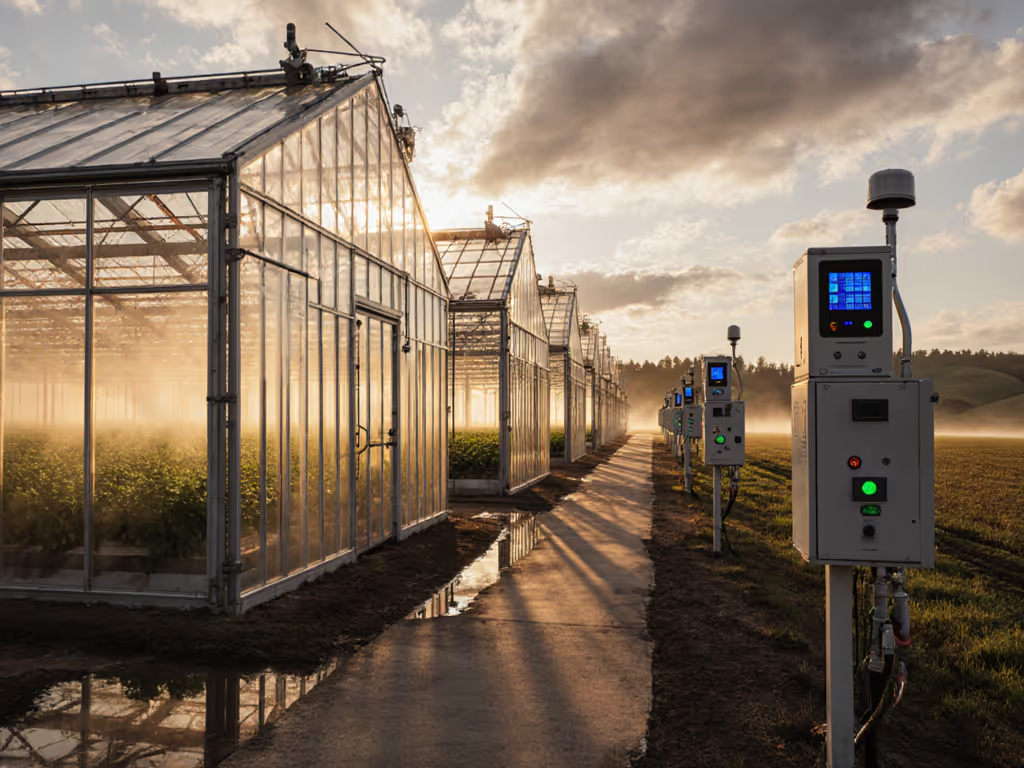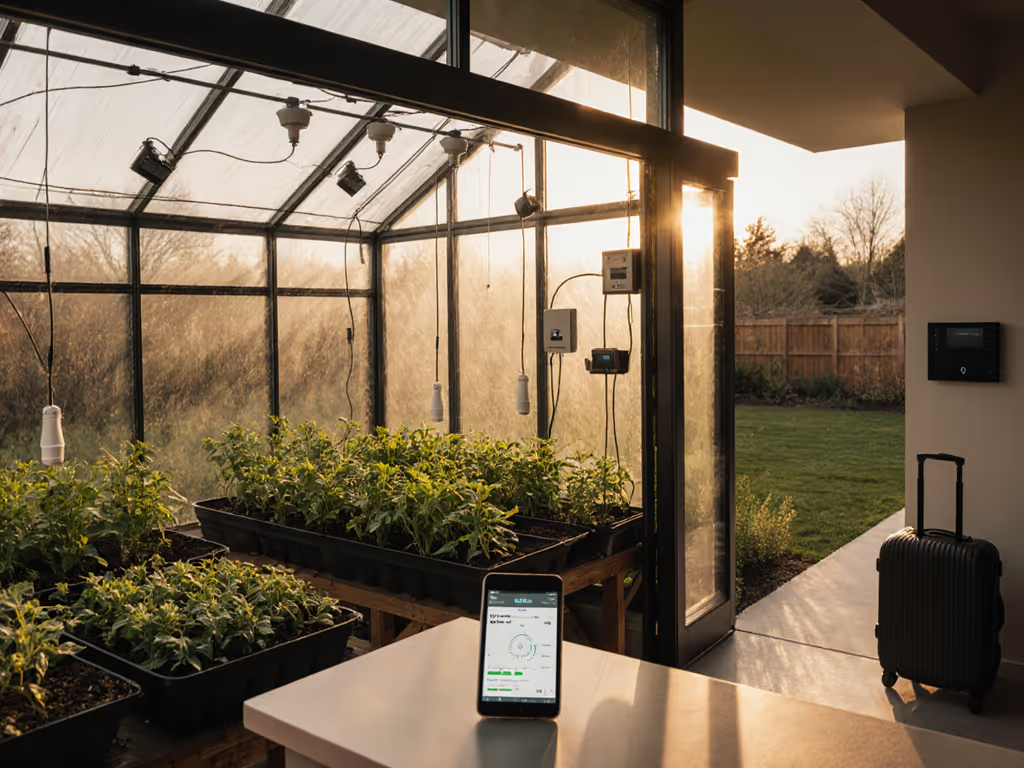Picture this: your suitcase is packed, passport ready, but your stomach knots tighten thinking of what awaits your attached greenhouse upon return (sun-scorched tomatoes, wilted seedlings, or worse, a structural collapse from unexpected weather). You're not alone. As someone who once inherited a stifling hoop house where even midday pruning felt like punishment, I understand how space discomfort becomes garden neglect. But when you design systems that prioritize both plant and human comfort, you create a sanctuary that thrives even when you're away. Let's explore how to build an attached greenhouse that keeps flourishing while you travel, because comfort grows plants, and keeps you tending through storms.
Why Frequent Travelers Need Specialized Greenhouse Planning
Most gardeners obsess over summer heat spikes, but for travelers, the real threat is cumulative stress during absence. One study of greenhouse owners who travel monthly found 68% experienced crop loss during trips longer than 7 days, often from humidity crashes or temperature swings too subtle for standard thermostats to catch. An attached greenhouse offers unique advantages here: structural stability from your home's thermal mass, shorter wiring runs for sensors, and easier access to your home's backup power.
The key insight? Automation isn't about replacing your presence; it's about extending your sensory awareness. When my elderly neighbor started joining me for midday pruning after I cooled our space, I realized technology should make gardens more human, not less.
Step 1: Audit Your Greenhouse's Passive Safety Net First
Before spending on gadgets, ensure your attached greenhouse has robust passive systems (these are your travel insurance policy). Check these non-negotiables:
- Thermal Mass Deployment: Water barrels (55-gallon) placed along north walls stabilize temperatures 8-12°F cooler in summer, buying you critical time during absences. Measure: Your space needs 2.5 gallons of water per sq ft.
- Cross-Ventilation Geometry: Position vents at 1/3 and 2/3 heights (e.g., 18" and 48" from floor). This creates convection currents even when fans fail.
- Shade Strategy: Install removable white shade cloth (30% density) over roof panels. It reduces solar gain by 40% but still allows cloud-penetration on overcast days.
Cool the human, save the crop. This mantra applies doubly when you're away, passive cooling prevents your greenhouse from becoming a pressure cooker that destroys both plants and morale.
Step 2: Install Sensory Monitoring (Without Over-Engineering)
Remote greenhouse monitoring should feel like checking a baby monitor, simple but lifesaving. Prioritize these measurements where you can see patterns, not just numbers:
- Humidity Gradient Tracking: Place sensors at plant canopy height (18-24") and near the roof. A difference >15% indicates poor air circulation, a fungal disease time bomb.
- Soil Temperature Alerts: Target 65-75°F for most vegetables. Set alerts for <55°F or >85°F (critical for seedling survival).
- Dew Point Calculations: When air temperature approaches dew point within 3°F, condensation risk spikes. Your system should trigger fans before this threshold.
Skip complex dashboards. A simple color-coded SMS alert system ("GREEN: all stable / AMBER: humidity high / RED: temp critical") works reliably on spotty rural cell service.
Step 3: Automate Only Critical Fail-Safes
Greenhouse automation systems for travelers should follow the 20/80 rule: 20% of features prevent 80% of disasters. For gear that handles these fail-safes out of the box, see our self-regulating greenhouse kit reviews. Focus exclusively on:
- Temperature-Triggered Vent Openers: Wax-piston auto-vents (no electricity needed) that activate at 75°F. They're foolproof during power outages.
- Smart Shading: Motorized shade cloth that deploys when solar radiation hits 500 W/m² (measured by an inexpensive pyranometer).
- Water Backup Loop: Connect drip irrigation to a rain barrel elevated 36" above plants. Gravity feed continues for 3-5 days if main system fails.
Avoid moisture-based triggers for watering, they cause overwatering disasters when dew forms overnight. Instead, use scheduled brief cycles (3 min every 12 hours) during absence.
Step 4: Create a "Neighbor Protocol" for Extended Trips
No automation replaces human eyes. Before leaving, establish clear protocols with a trusted neighbor:
- Sensory Checkpoints: Ask them to note: "Does the air feel damp when I open the door? Can I smell soil?" These cues detect problems faster than digital readings.
- Physical Triggers: Place a folded paper flag near the door. If it's unfolded upon return, they intervened (no need to text unless emergency).
- Crop Triage Guide: Laminate a card showing: "These greens can wait 10 days (kale, chard), these need help by day 5 (lettuce, herbs)."
When I travel, my neighbor checks my attached greenhouse for "the hand test": if they can comfortably rest their palm on the soil for 10 seconds, crops are safe. Simple, tactile, impossible to misinterpret. And very easy to teach.
Step 5: Build Your "Pre-Departure" Checklist
A ritualized exit process prevents panic. Your 5-minute checklist should include:
- ✓ Confirm wax-piston vents move freely (tap gently to release any binding)
- ✓ Check rain barrel has 70% capacity (add 5-gallon bucket of water if needed)
- ✓ Set shade cloth to 50% deployed position (balance light/heat for most climates)
- ✓ Verify cell signal strength at greenhouse location (walk with phone)
- ✓ Text neighbor your alert threshold settings ("Only call if RED alert lasts >2 hours")
The Real Freedom: Coming Home to Thriving Greenery
Last month, I returned from a 9-day trip to find my attached greenhouse humming. Tomatoes were plump, not cooked. The air held that sweet, earthy smell of healthy soil. This isn't luck, it's what happens when you design systems that respect both plants' needs and your life's rhythm.
The most sustainable greenhouse automation systems don't eliminate your presence; they preserve your connection. When you enjoy the space enough to tend it through every season, you'll make time to check those alerts, tweak those settings, and savor the harvests that wait for you. That's when your attached greenhouse transforms from a structure into a living partner in your journey.


